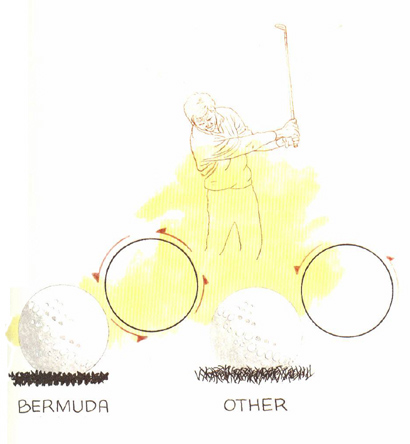Grass Knowledge
It’s no secret that the bent grass greens common to the northern tier of the United States putt much differently than the Bermuda grass of the South. The long-bladed bent is like long hair – the ball rolls along the arcing blades of grass – whereas the short-bladed Bermuda forms a sort of crew cut, with the ball rolling along the tops of the bristles. These bristles create much more grain than-do the waves of bent grass and therefore have a far greater effect on the roll of a putt. On some southern greens, a putt against the grain must be hit twice as hard as a downgrain putt.
Although less talked about, the difference is equally marked on fairways and in the rough. The ball tends to perch on the top of Bermuda fairways and sit a bit lower into bent and other types. As a result, you get clean hits and more backspin – and sidespin – on Bermuda, but slightly more distance on other types of grass, where a bit of grass gets between the clubface and ball, reducing spin.
In Bermuda rough, it’s often a matter of survival – the thick, gnarly blades grab your club and slow it down, so in many cases your best bet is to cut your losses and simply chop the ball out with a short iron. In other grasses, the challenge is one of variety. You can get thick and difficult lies, as in Bermuda, but you can also get several kinds of flyer lies, which means there’s most opportunity for creative shotmaking.
